The latest LED technology together with improved battery capacity have revolutionised night-time cycling by providing greater visibility and safety, even for daytime cycling. Here are some guidelines for choosing the best cycling lights for each situation.
Lights to See and Be Seen
The first question to ask yourself when choosing bike lights is whether you just need to make yourself visible, for cycling in daylight or well-lit areas, or if you also need to illuminate your path when night-time cycling in poorly lit areas.
Inexpensive lights, combined with other equally important visibility features will suffice if you need to be seen on well-lit urban roads.
If you plan to ride onroads with poor or zero lighting and also be highly visible, you should equip yourself with a light source that is powerful enough toensure safe riding and provide sufficient battery life for the duration of the ride.
You can see more on lights and accessories that make you visible and comply with regulations at the end of this article and in this video on visibility when cycling.
Output: the Lumen
A lumen (lm) is the International System of Unit (SI) of luminous flux emitted by a light source, and is used by almost all manufacturers of lights and torches to express the capacity of their devices. The lumen gives an approximate idea when choosing a light, but other factors also need to be taken into account before making the final choice.
Unfortunately, the bike industry does not use a single standard for calculating the lumens of bicycle lights, so more references are needed for light output comparison. You may find, for example, that a light marked as 1,000 lumens is brighter than one with an even higher number of lumens. Generally though, the output data provided by most well-known brands is reliable.
The quality and functionality of a bicycle light is also significantly influenced by the angle of the light source and the range, which depends on the reflector surrounding the light source, the lens and the number of LEDs.
Halogen lamps have practically disappeared, since the appearance of LED technology, which achieves the same brightness with extremely low energy consumption. For this reason halogen devices are hard to find nowadays and are only used in very economical products.
Batteries and Duration
Thebatteries used in cycling lamps are as important as the lights themselves, as they provide the duration required for getting from one destination to another. As we mentioned, LEDs have greatly improved battery life, thanks to their very low consumption.
The batteries used in less powerful lights, for visibility, are usually the disposable standard or button type or rechargeable via a USB port. These types of batteries are sufficient and their reduced size allows smaller, lighter designs.
Headlights for illumination, mainly use rechargeable lithium-ion (Li-Ion) or lithium-polymer (Li-Po) batteries, which are currently the most efficient. Depending on the model, the battery is either internal or connected externally by a cable. We will see the pros and cons of these designs later.
Battery capacity is measured in milliampere hours (mAh) and this expresses the energy stored. The most commonly used lithium batteries are 18650 batteries with a capacity between 1,500 and 3,350 mAh. 1 or 2 batteries are used in integrated models and between 4 and 6 are used in external battery packs. They are charged with standard chargers and it is this type of battery that is used in the famous Tesla electric cars.
Another energy source is the dynamo-powered light. There are two types; bottle (or sidewall) dynamos generate energy via a small wheel in contact with the tyre sidewall, while hub dynamos obtain electromagnetic energy from the rotation of the wheel itself, without friction. However, their use is very limited and is almost exclusively limited to urban bikes.
Bicycle Headlights
Now that we have seen the most important features, we will look at the different types of cycling headlights and the recommended lumen ratings according to their use.
Leaving aside the fast-disappearing halogens, we will focus on LEDs. These can be divided into two categories according to their attachment system and the location of the batteries. Most are attached to the handlebars and many can also be attached to your helmet. We have divided the headlights into two groups, depending if they have an internal or external battery, as this significantly conditions the mounting options.
-
Internal batteries. used in the past for low-power lights with standard, disposable or rechargeable batteries. However, new battery technology means designs are now smaller and their capacity is greater and lithium batteries can now feature inside very powerful bike lights.
- Pros. Internal batteries simplify mounting and avoid cables. It is the ideal system for the simplest lights with low energy consumption, designed to enhance visibility or for more powerful lights, on shorter routes, that do not need to last for more than 2 hours.
- Cons. The increased weight of lights with internal batteries can cause discomfort when used on a helmet, except in the case of the smallest lights. No matter how powerful the rechargeable battery, if it is not replaceable, the battery life will be no greater than 1.5 to 3 hours on powerful lights, depending on the intensity used. The simplest models usually have a single 18650 rechargeable battery, which is replaceable. For powerful bike-specific headlights, only the most advanced models offer higher capacity batteries that are easily replaceable and can be carried as spares, but these are also the most expensive.
 Specialized Flux 1250 Headlight
Specialized Flux 1250 Headlight 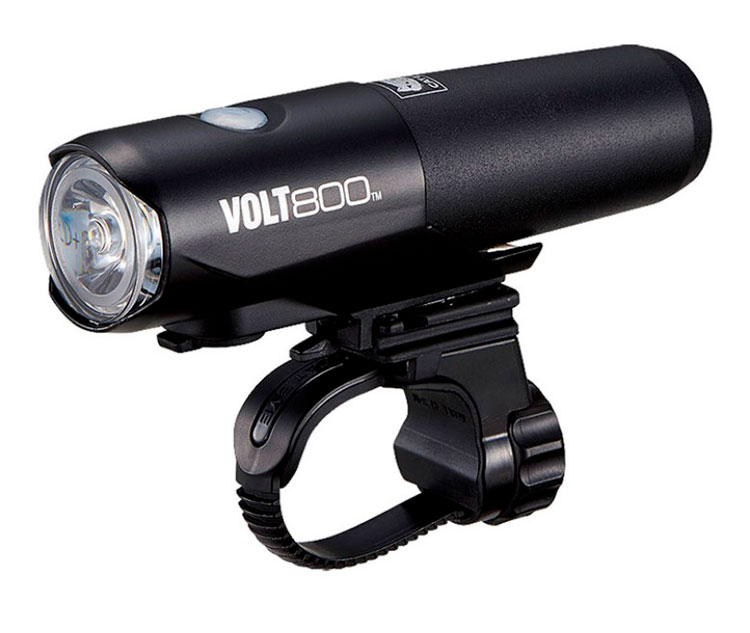 Cateye Volt 800
Cateye Volt 800
-
External batteries. Their versatility make them the most common system for powerful lights. They consist of packs of between 4 and 6 18650 batteries cased in a battery pack that can be attached to the frame, your clothing or carried in your backpack.
- Pros. The same battery can be used with an infinite number of headlight models. As the battery can be housed in your backpack, these headlights are lighter when mounted on your helmet. They offer exceptional battery life, although the standard headlight battery capacity is from 4,000 to 6,000 mAh, spare batteries can extend the capacity to suit your needs. If you use the most powerful 18650 batteries, a single pack of 6 offers over 20,000 mAh, which is more than enough for night riding.
- Cons. The hassle of a cable connecting the battery to the headlight. The battery pack is usually attached to the frame, as close as possible to the headlight, for ease of use.
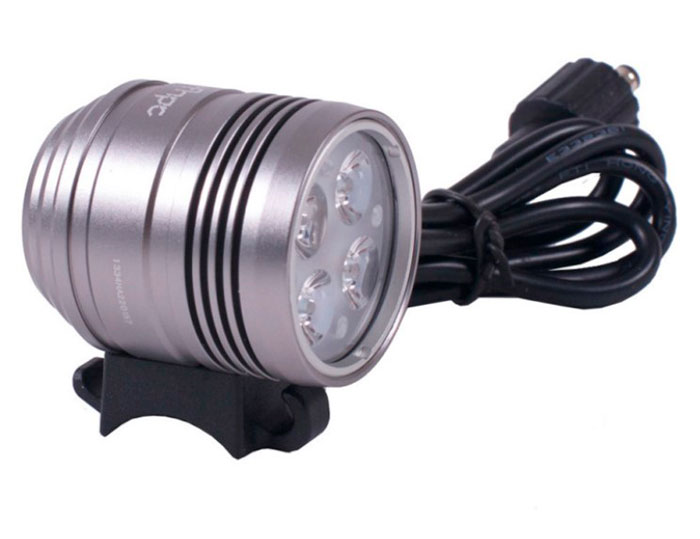 TFHPC Bike Light 2200 Lumen
TFHPC Bike Light 2200 Lumen Below, we summarise the cycling light brightness recommendations, according to cycling areas and routes and we also include some tips:
- Well-lit urban areas. For visibility, headlights with between 50 and 100 lumens maximum power will suffice (always combine them with other visibility elements).
- Areas with average or poor lighting. Or in areas where you are unsure what to expect, we recommend increasing the lumens to at least 200-300.
- Unlit areas where you depend on your own light source. The minimum power requirement for easy tracks and roads is 400 real lumens, but we recommend at least 800 to 1,000 lumens for safety and comfort. At high speeds, the light beam needs to reach a sufficient distance to be able to anticipate bends or possible obstacles.
- Technical MTB routes. For technical mountain routes, a minimum of 1,200 lumens with a quality headlight and, if you intend to descend demanding trails, you will have to increase the power and even use two headlights at different angles (handlebars and helmet), to illuminate a larger surface area with greater definition of the terrain. Nowadays, you can find very powerful lights with well over 10,000 lumens, although they have high battery consumption, so you need to find a balance. If you choose well, you will be able to tackle all kinds of routes, almost as if it were daylight and with a good battery life.
There are several kinds of bike light mounting systems, but handlebar mounts are the most comfortable to use, as the bike carries the weight and it is easier to use the light controls. A helmet light gives more natural vision, as it follows your eyes, and it makes the rider visible, even when off the bike. Handlebar lights are by far the most common, but a combination of both handlebar and a helmet light is highly recommendable. The latter is useful for illuminating tight bends or the sides of the road, by simply turning your head naturally, and it can serve as a spare light if the main light fails, or as an auxiliary light if you have to stop for a technical issue.
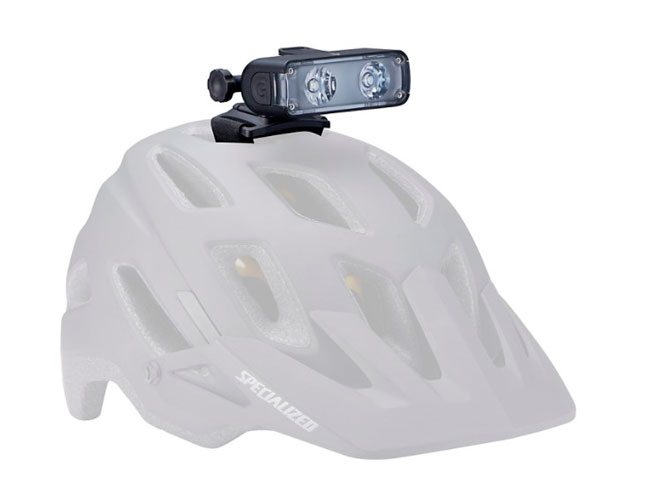 Specialized Flux 800 Headlight
Specialized Flux 800 Headlight Most headlights have various power settings to adapt to the demands of the ride and optimise battery life. And the most technologically advanced, such as the Garmin Varia, automatically adjust their brightness according to light conditions, speed and the cyclist's profile.
Rear Bike Lights
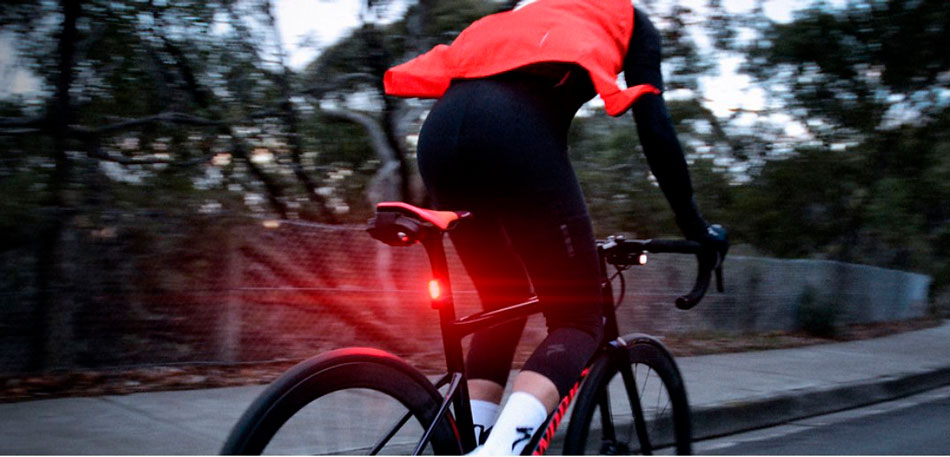 Image by Specialized Spain
Image by Specialized Spain Rear lights are only used to make the rider visible, but they are probably the most important piece of visibility kit, even for daytime cycling, especially when riding on busy roads. Rear lights have been shown to make cyclists much more visible to drivers, and are essential for preventing accidents. Thanks to the latest LED technology, this has led to the development of powerful rear lights for daytime use, with over 200 lumens in some cases.
There are two kinds of rear lights:
- Classic rear lights for night use in well-lit areas and urban and MTB environments, where there is no traffic. They usually have between 5 and 20 lumens and they are designed to offer the best combination between visibility, lightweight and battery life, resorting to button batteries in many models.
- Daytime rear lights. Designed to make the cyclist visible in broad daylight ranging from a distance of hundreds of metres to over a kilometre. The most common have between 30 and 100 lumens, although some models exceed 200. All have the option of lower light intensity for night-time use, because, at maximum intensity, they can dazzle drivers or other cyclists. The more advanced models have an ambient light sensor that automatically changes light intensity.
We have to mention Garmin again, for its Radar Varia light, which features a radar system that warns the cyclist of the presence of approaching vehicles and, in addition, integrates in the same device a high intensity rear light that reaches up to 68 lumens in day mode. You can see it in action in this video on the Radar Varia RTL 510.
Legal Regulations and Final Advice
When equipping your bike with lighting and visibility equipment, it is important to comply with the regulations of the country where you are cycling. In Spain, when riding at night, through tunnels or in low visibility conditions, it is compulsory to carry:
- A white front light
- A red rear light which can be fixed or in flash mode to increase the cyclist’s safety.
- A non-triangular rear red reflector, even if the rear light is on, to maintain visibility if the rear light fails.
- On interurban roads, reflective clothing must also be worn.
Amber reflectors on pedals and wheel spokes are also recommended.
And all these items must be approved according to national and EU standards.
All this is explained, with more safety tips, in the video we mentioned at the beginning of the article on visibility when cycling.
As lighting is an important safety issue, we do not recommend you choose these products based only on the lowest possible price and always try to look for approved products, at authorised dealers.
You can find the best advice and a large selection of the best cycling lights in our Mammoth stores and at mammothbikes.com
Related articles and videos


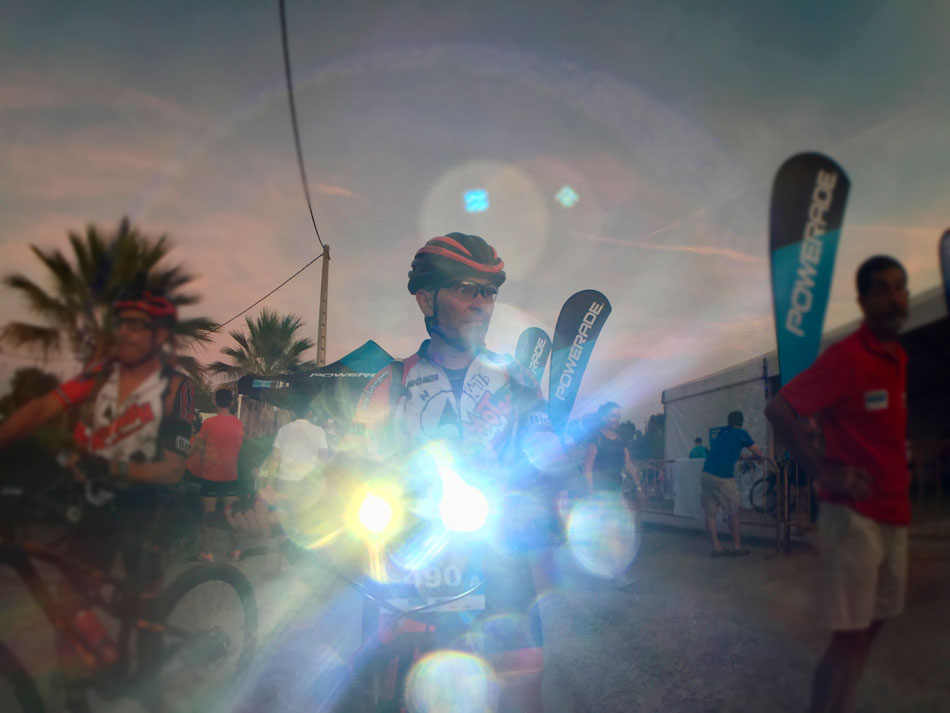
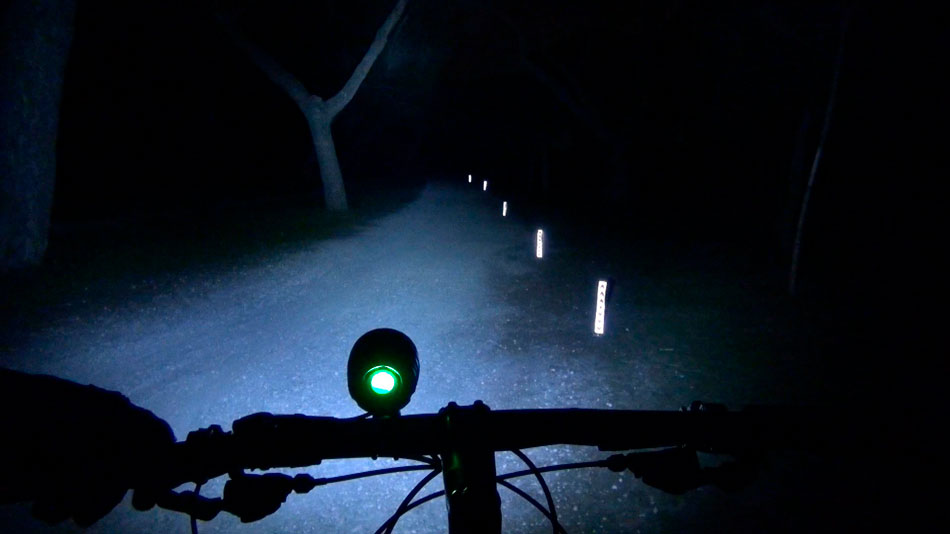
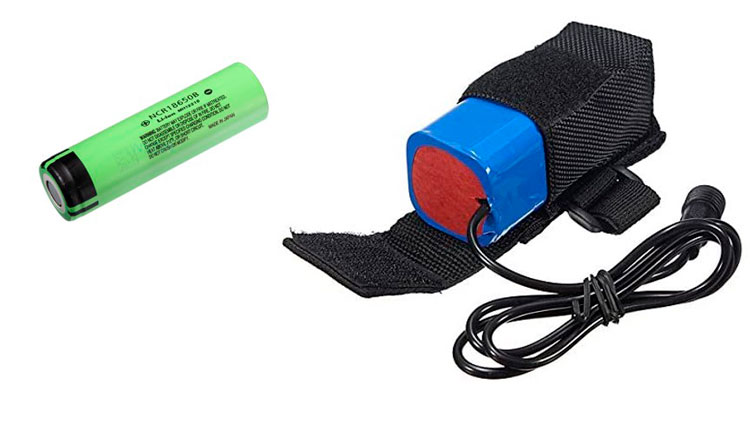
 Specialized Flux 1250 Headlight
Specialized Flux 1250 Headlight  Cateye Volt 800
Cateye Volt 800  TFHPC Bike Light 2200 Lumen
TFHPC Bike Light 2200 Lumen  Specialized Flux 800 Headlight
Specialized Flux 800 Headlight 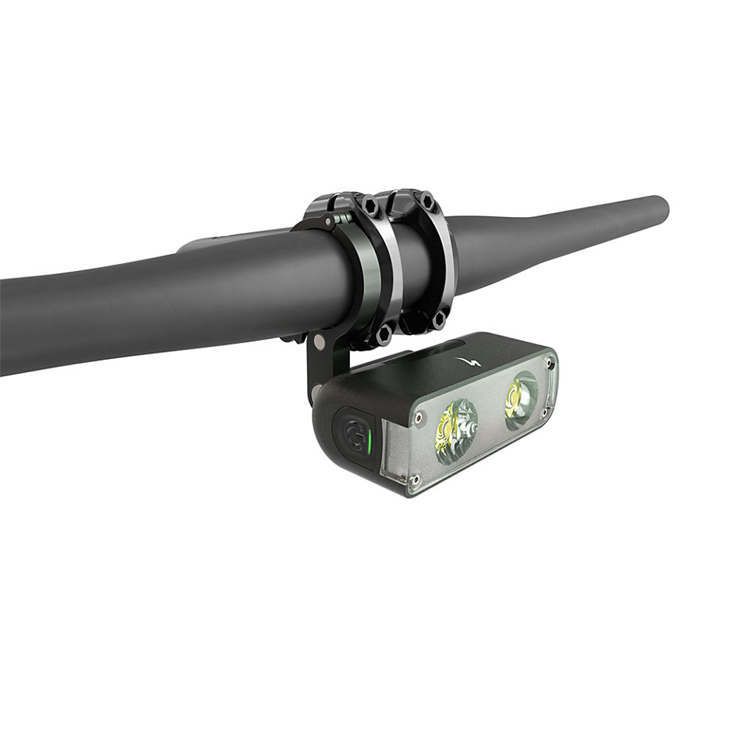
 Image by Specialized Spain
Image by Specialized Spain 
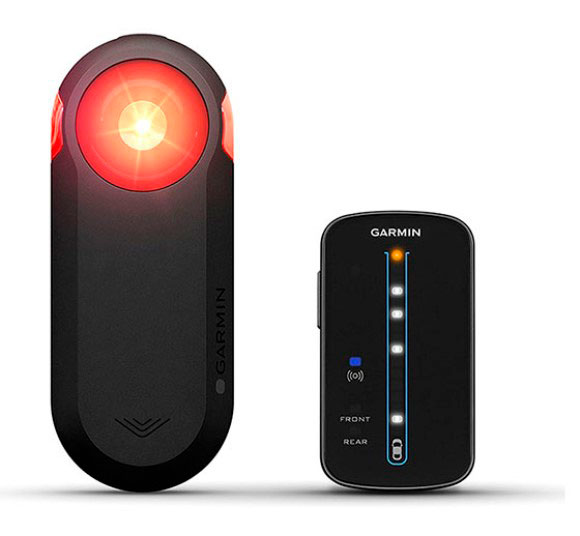

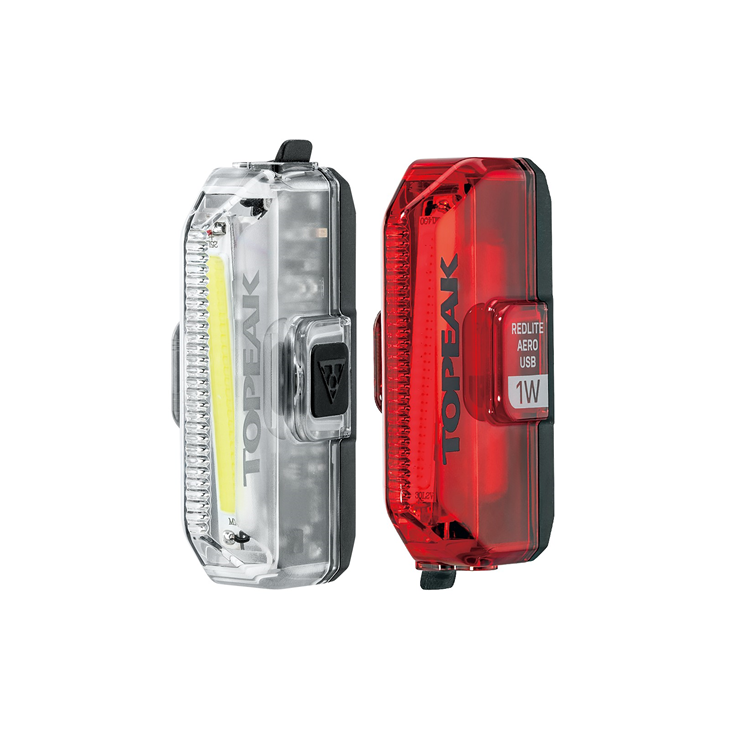
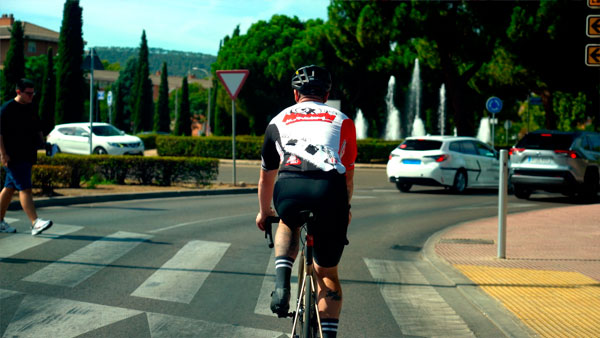



Leave a comment
Be the first to comment on this article.